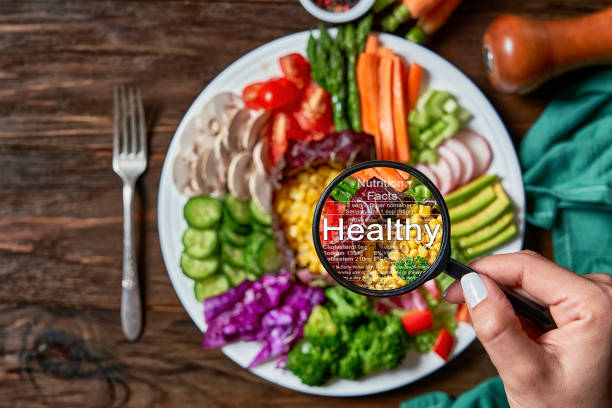Nutritional Value of Organic Foods
You might have heard about organic foods and wondered about their nutritional value. While you may be able to tell if you’re eating something organic by its label, it is not necessary that organic food is healthier. Many fruits and vegetables that are organic still contain residue from pesticides, even if they’re not labeled as such. Fruits and vegetables with thick skins are less likely to contain chemicals that can be harmful to your health.
Cost of organic food
While it’s easy to see that organic food is more expensive, it’s not always so. In a recent study, students from Colby College compared the prices of organic food with non-organic foods and found a wide range of differences in price. Organic brown rice, for instance, cost ten percent less than non-organic counterparts. On the other hand, organic ground beef was 134 percent more expensive than non-organic meat. Overall, the average cost of organic food was 68 percent higher than that of non-organic food. Even organic oatmeal, for instance, cost sixteen cents per ounce, compared to seventeen cents for non-organic varieties.
The price of organic food is higher than that of conventionally grown foods, but the benefits outweigh the cost. You’ll be feeding your body more nutrients and fighting off diseases that can ruin your immune system. Plus, organic food is grown without the use of toxic pesticides and chemical fertilizers. Organic farming practices also avoid using sewage sludge, irradiation, and genetic manipulation.
While the demand for organic food is growing, the supply of organic foods is shrinking. As of 2018, the market for organic foods in the US accounted for $80 billion, which represents two percent of the total global food market. Moreover, only 0.9 percent of the world’s farmland is currently dedicated to organic farming. This shortfall in supply means that the price of organic foods goes up.
Compared to conventionally produced food, organic food may have more nutrients and lower pesticide residues. But the cost of organic food can range from mild to expensive. Fortunately, there are ways to save money on organic food by utilizing coupons, delivery services, and farmers’ markets.
Pesticide residue
Pesticide residues in organic foods can affect the organic product’s status and violate the EU’s organic law. According to the regulations, the maximum residue levels must not exceed 5% of the labeled concentration. The limits for various foods and ingredients are specified in the Food and Safety Standards (contaminants, toxins, and residues) Regulations 2011 (GB28260-2011).
The Food and Drug Administration and the United States Department of Agriculture routinely monitor pesticide residues on foods. These organizations use the results of pesticide residue tests to determine which foods are safe to consume. Organic foods may also contain residues from chemical-approved organic pesticides and from the environment. But the good news is that most pesticide residues are small and unlikely to pose a health risk.
Nonetheless, the government must continue monitoring to improve its regulations and reduce the risk of pesticide contamination. However, violations of safety thresholds are rare. In Canada, researchers tested 3,188 food samples and found that only 1.3% of them exceeded the permissible level. In the European Union, the latest report on pesticide residues in foods showed that 97.2% of the food samples tested did not contain any residues at all.
Many organic pesticides are biopesticides, or naturally occurring pesticides. There is a national list of biopesticides that are permitted for use in organic farming. Organically produced food also contains a higher proportion of biopesticides, which have less negative effects on the environment.
The US EPA is responsible for approving pesticides and setting levels for pesticide residues on food. However, federal regulation of pesticides on farms is fragmented across multiple federal and state agencies, leaving the responsibility of food testing largely to states.
Cost of natural food
Although natural food and drinks are still relatively new, they have made huge strides in recent years. Consumers’ growing focus on health, the prevalence of chronic lifestyle diseases such as obesity and diabetes, and an increased awareness about the benefits of fresh foods have all spurred the growth of this market. However, natural food and drinks remain limited by their high cost and short storage life.
While the growth of this industry has been relatively stable over the past decade, it is expected to slow in the future, as costs of these products continue to rise. The recent COVID-19 pandemic has increased the costs of normal food and beverages, which is not ideal. As a result, restaurateurs have been upgrading their meat in an effort to attract more consumers to their burger joints. The cost of natural food colours is also a barrier, with the extraction process being complex.
The Natural Food market is segmented into Type, Application, and Manufactures. Major manufacturers of natural foods include Kroger, Dean Foods, Hain Celestial, Organic Valley, Spartan Stores, United Natural Foods, and Clif Bar & Company. Other manufacturers include General Mills, Whole Foods, and Quaker Oats.
Nutritional value of organic food
Growing consumer demand for organic foods has led to an increase in scientific studies on the nutritional value of these foods. However, the comparison of the nutritional value of organic and conventional foods is still limited. Only a few well-controlled studies have provided conclusive evidence. Therefore, any generalisations about the nutritional value of organic foods must be made with caution.
Several studies have shown that organic foods contain higher amounts of antioxidants and vitamins than their conventional counterparts. Moreover, organic produce is lower in pesticides and nitrates. Organic foods also contain more antioxidant phytochemicals than their conventional counterparts. This difference may have an effect on human health.
A recent study found that organic fruit contains up to 40 percent more antioxidants than conventional fruit. This higher concentration of antioxidants is particularly beneficial for the body, as they reduce the natural chemical oxidation of cells in the body. Organic whole milk also contains more omega-3 fatty acids than milk produced by conventional dairy farms.
Organic food also helps protect the environment, as it does not contain pesticides or herbicides. It also does not contain heavy metals or nitrates that can be harmful to human health. Organic crops are grown using different methods of fertilisation, which improves the nutritional value of the crops.
Organically grown foods are generally higher in vitamin C than their conventional counterparts. Moreover, they contain higher concentrations of ascorbic acid and lower levels of protein. While the evidence available is not conclusive, there are some studies that show improved animal health and reproductive performance when fed with organic foods.
Health benefits of organic food
Organic food is produced without chemical pesticides and may provide consumers with a host of health benefits. Research has shown that foods grown without pesticides are higher in antioxidants, and can reduce cancer risk. Some organic foods are also higher in healthy fats. Experts recommend a healthy mix of organic and non-organic foods to ensure the best balance.
Organic food is also safer for consumers than its conventional counterparts, reducing exposure to harmful pesticide residues and growth hormones. This is especially important for children, who are highly susceptible to pesticide exposure. Organic foods also provide the body with more nutrients than conventionally grown foods. Moreover, they’re lower in pesticide residues and nitrates.
Organic foods also contain carotenoids, which are natural antioxidants. These compounds are important for good immune system function, growth, and vision. Organic food also contains higher levels of phenolic compounds, which have anti-inflammatory, anti-mutagenic, and antioxidant properties. These compounds can help prevent cancer and improve cardiovascular health.
Organic foods are also free of pesticides and synthetic fertilizers. Although synthetic pesticides are generally safe for consumption in small amounts, they are highly harmful when exposed to them over an extended period of time. Pesticide residues are also linked to increased risk of developing ADHD and reduced sperm quality in men. An extensive meta-analysis of crop production methods found that organic crops were 50% less likely to contain pesticides and 50% less likely to contain cadmium, which can accumulate in the body.
Another key benefit of organic food is that it is free of genetically modified foods. Genetically modified or GMO food crops contain DNA that can’t exist in nature and cannot be derived from traditional crossbreeding methods. As a result, organic food is healthier than GE and conventional foods.












